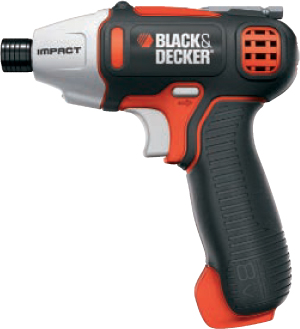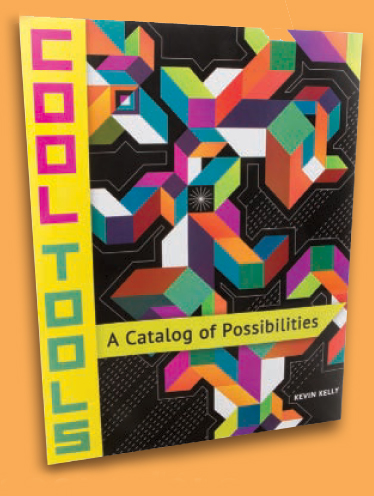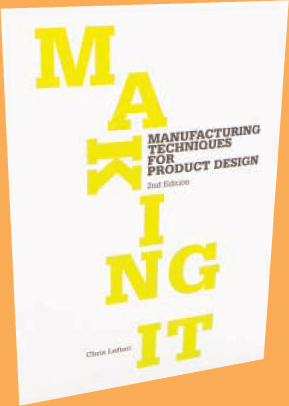BOOKS

8V Impact Screwdriver
I used to think you couldn’t beat a corded ½" drill for hardcore screwdriving, but I’ve just changed my mind. I recently built a wooden gate, driving a few dozen deck screws with my drill — careful, slow work. Then, I got my hands on the new Black & Decker 8V Max Lithium Impact Screwdriver. I can’t believe how much better this compact, solid tool is for the job. Instead of risking stripped screw heads, it drives like a dream. The percussive rat-a-tat becomes a loud — but welcome — sound as it turns screws with terrific torque and speed. It comes with a charger, magnetic hex bit storage, and integrated LED light.
—John Edgar Park

Kimwipes
Kimwipes look like tissue paper, but they’re quite different. These low-lint wipes are used in labs throughout the country, but they’re also great for makers. I use them mostly for cleaning 3D printer beds with acetone. Since they’re also low-static, I use them with a horsehair brush and alcohol for cleaning PCBs. The wipes are also strong enough to scrub off adhesive gunk when using a solvent like Goo-Gone. Cheaper than lens wipes, they’re great in a pinch for cleaning all kinds of optics, from microscope slides to magnifier lenses, and even your eyeglasses. They’re not bad as LED diffusers, too.
—TK

NICK AND TESLA’S HIGH VOLTAGE DANGER LAB
by “Science Bob” Pflugfelder and Steve Hockensmith $13 : Quirk Books
When the parents of 11-year-old twins Nick and Tesla disappear, they move in with their Uncle Newt. He’s a gadget maker for a secret government agency. As you might expect, the kids quickly get involved in a hair-raising adventure, and are called on to build a number of electronic gadgets to save themselves and the free world from an untimely end. The bonus part of this fun middle-schooler adventure/mystery series is that the book includes instructions for building the devices Nick and Tesla use: a burglar alarm, an electromagnet, a mobile tracking device, a compressed-air water rocket, and more. It’s the first in a series of books starring the techie twins. Look for the follow-up title, Robot Army Rampage, in February 2014.
—MF

ARDUINO ADVENTURES: ESCAPE FROM GEMINI STATION
by James Floyd Kelly and Harold Timmis $40 : Apress
Like Nick and Tesla’s High Voltage Danger Lab, Arduino Adventures is a science-fiction novel filled with projects you can make to help the protagonists get out of dangerous situations. In this story, you and a couple of space cadets named Cade and Ella are trapped in a damaged space station that’s orbiting Earth. Your mission is to build eight different Arduino gadgets that will enable you and the young scientists to escape the space station. Geared to a slightly older audience, even adults will have fun making a temperature sensor, a bucket transport system, a motion detecting gizmo, and more. The book was co-written by MAKE contributor James Floyd Kelly.
—MF

STRUCTURAL PACKAGING: DESIGN YOUR OWN BOXES AND 3-D FORMS
by Paul Jackson $25 : Laurence King
I recently listened to an interview with Mythbuster Adam Savage in which he enthusiastically described his ongoing love affair with cardboard as a construction material. Savage would find a soul mate in Paul Jackson, a papercraft artist and professional “folding consultant” to Nike, Siemens, and other companies. Jackson’s book contains step-by-step instructions for making cardboard packaging and reflects his long experience and consideration of package design. Based on his formula for “creating the strongest possible one-piece net that will enclose any volumetric form which has flat faces and straight sides,” the variety of box shapes shown here that can be made with a single sheet of cardboard is remarkable and inspiring. Take a look at videos and sample box templates: www.laurenceking.com/en/structural-packaging-design-your-own-boxes-and-3d-forms/
—MF

RAW AND FINISHED MATERIALS
by Brian Dereu $69 (ebook) $85 (print) : Momentum Press
Written in a straightforward, easy-to-understand style, this is a guide to the properties and uses of common materials: metals, alloys, plastics, composites, ceramics, adhesives, and more. It’s pricey, but a worthy addition to the bookshelf of anyone who builds things that must meet certain specifications achievable only through the use of certain materials. It’s also full of interesting facts: “Teflon...is the only material that a gecko lizard cannot climb” and “Dried peat bogs... plagued Russia in 2010, where more than 30 peat fires joined several hundred forest fires in producing unprecedented deadly smog throughout the western half of the country.” Brian Dereu, the author, has written two projects for MAKE: the "Dead Drop Device" (Vol 16, page 72) and the "Telekinetic Pen" magic trick (Vol 13, page 85).
—MF


